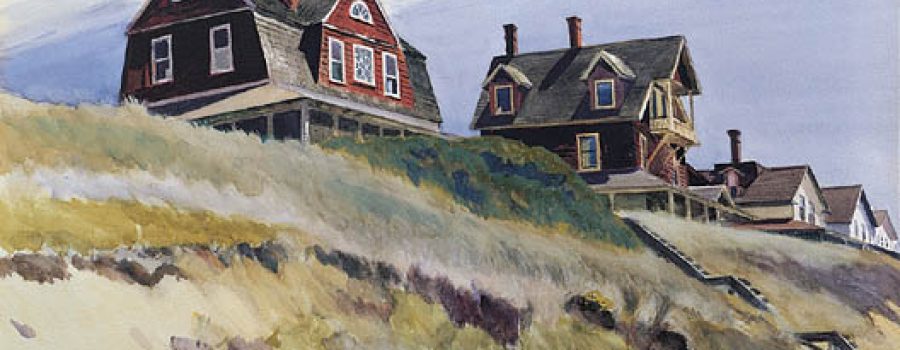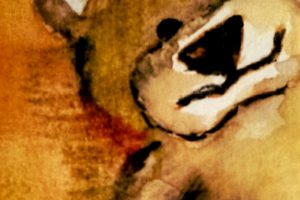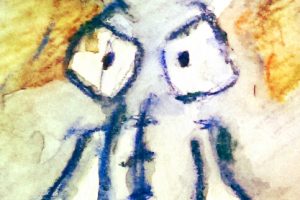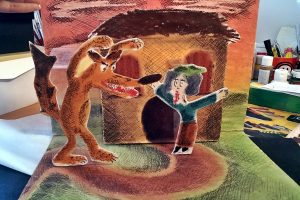European artists have been using watercolor painting techniques for well over 500 years. This medium changed over the centuries in response to developments in the wider art world. Eventually watercolor painting developed into a medium distinct from oil and acrylic. It’s portability allowed artists to achieve greater realism by recording the natural world outside the studio and the effects that watercolor had on the genres of landscape and natural history painting were particularly influential. It is also one of the few painting mediums where women had a substantial presence and influence since its introduction. Even into the 20th and 21st centuries, watercolor painting continues to evolve and is used to create a variety of styles ranging from abstraction to photo-realism.
15th and 16th Centuries – Watercolor Painting in the Renaissance
When watercolor painting on paper was introduced to Europe in the late 15th century, it allowed Renaissance artists to paint outside for the first time. While the paint had been available since the late middle ages, paper was considered a luxury until the late 14th century. Like with other kinds of paint, you first had to first buy the pigment, grind it up and mix it with a binding medium like gum arabic. You also didn’t need to use messy binders like egg yolk and seed oils and unwieldy painting surfaces like heavy wooden panels. Using lightweight paper, you could sit down on a hilltop and record the colors of the atmosphere. At this time watercolor was used to make sketches and to record visual information. The artist would later use them to complete larger scale oil or tempera paintings in his studio.

Albrecht Dürer, Left Wing of a Blue Roller, c. 1500 or 1512, watercolor and gouache on vellum, Albertina, Vienna
The first major artist to make stand-alone watercolor-paintings was the German Renaissance master Albrecht Dürer (1471-1528). Dürer mainly used watercolor to record minute detail in his painted subjects, especially plants and animals. Hyperrealism was a current in Northern Renaissance art and this shows through in Dürer’s exceptional attention to detail. What set Dürer apart in his use of watercolor, is that he made the first complete watercolor paintings. Whether it was a painting of a hare or a bird’s wing, Dürer used watercolor to breathe life into his subjects. Another common use of watercolor in the Renaissance was to make portrait miniatures. These finely crafted keepsakes were exchanged between family members and lovers, much like photographs are today. This genre was a popular mode of expression for women painters like the mannerist artist Sofonisba Anguisola (1532-1625).

John James Audoubon, White Gyrfalcons, hand colored engraving based on watercolor, c.1827-38,
17th and 18th Centuries – Watercolor Painting and Science
The 17th and 18th centuries, or “baroque age” was a time of massive change in European society, especially in regards to science. Fields like botany and zoology, as we know them today, were in their infancy and explorers were discovering new continents. In this era, watercolor painting of the natural world wasn’t just for artists. It was also used by scientists who wanted to record natural phenomenon in the great outdoors. Artist/scientists like Maria Sibylla Marian (1647-1717) and John James Audobon (1785-1851) recorded the natural appearance of plants and animals in watercolor. And at the same time made great strides in both art and science.
Free from the restrictions of the Catholic Church. The Protestant Dutch Republic became the European epicenter for natural history illustration. Dutch watercolorists made accurate paintings from life that would later be turned into woodcuts and engravings in scientific textbooks. While women in the Dutch Republic had unprecedented access to education in Early-Modern Europe, Maria Sibylla Marian was truly an exceptional woman for her time. Trained as a watercolorist in the art of still life. Marian traveled to the Dutch colonies in Brazil and Suriname to record the flora and fauna of this new world. Her most enduring illustrations depicted the life cycles of moths and butterflies. Like Dürer, she employed a hyper-realistic style. Where she differed from Dürer is that while the older master used the watercolor paintings for aesthetic purposes, the watercolors of Marian were intended to aid scientists. But that doesn’t make them any less beautiful.
19th Century – Watercolor and the Industrial Revolution
The industrial revolution, which occurred in the latter half of the 19th century, transformed the way painting supplies were produced. Industrialization in England and France also went hand in hand with a shift away from realism in art. These developments changed the discipline of watercolor painting.

James McNeill Whistler, Westminster from the Savoy, 1896, Watercolor on paper, The Whistler Estate.
In 1846 Windsor and Newton developed a semi-liquid watercolor in a metal tube. Factories also started producing paint boxes with compartments for dry paint cakes and trays for mixing the paint with water. This further increased the portability of watercolor paints. This opened up the discipline to a greater number of people, including women and hobbyists. Factories also started to produce special watercolor paper that withstood the “reductive” painting techniques that were becoming increasingly popular. With these techniques you could sand or scrape away parts of the paper to make highlights. You could also use sponges and pieces of bread to soak up wet paint and soften the effects.
During the second half of the century, American expat James McNeil Whistler (1834-1903) used a more abstract approach to depict the modern world in watercolor. Like his contemporaries the impressionists, Whistler dispensed with classical subjects and decided to paint sunsets over industrial harbors and modern day interiors. Using industrially manufactured pigments, Whistler experimented with techniques such as thin washes, scumbling, drips, pooling and splashing the watercolor onto the paper. These techniques diverged from using watercolor the same way one would use oil paint and Whistler helped develop the medium’s unique features.
20th century – Watercolor in Abstract Expressionism
From the mid-20th century onward, artists embraced pluralism in art. Unlike in previous centuries, there was no longer one dominant movement in art. You could paint in any style you wanted. Watercolor was used to create both abstract and realistic effects.

Paul Klee, Eros, 1923, watercolor on paper mounted on cardboard
The Cubist and Abstract Expressionist movements were the most influential in the field of painting. Artists like Paul Klee (1879-1940) and Georgia O’Keefe (1887-1986) used watercolor in an abstract way. Klee used pure plains of color to create geometric compositions. They look almost like quilts or stained glass windows. Georgia O’Keefe used watercolor to create minimalist landscapes. In these landscapes detail is not important. Rather, the mood that the colors create evokes the experience of the places she depicted.
In contrast to the abstract movements of the 20th century, realism was also a strong current in 20th century art. Artists like The Wyeths (N.C, Andrew and Jamie) and Edward Hopper (1882-1967) used watercolor to depict themes like isolation and loneliness in modern life. While the expressionists used pure plains of vivid color, Andrew Wyeth (1917-2009) used watercolor in a somber way to depict the reality of rural 20th century America. Like O’Keefe, Wyeth used color, or the lack thereof to create a mood, albeit a very different one. Wyeth’s compositions also contained parts that are very detailed and parts that are just planes of color, which creates an interesting effect.

Edward Hopper, Cottages at Wellfleet, 1933, watercolor on paper, Private Collection

Georgia O’Keeffe, Blue Hills no.3, 1916, watercolor on paper, Private collection

Andrew Wyeth, The Pikes, 1965, watercolor on paper, The San Diego Museum of Art









Leave a Reply
Your email is safe with us.